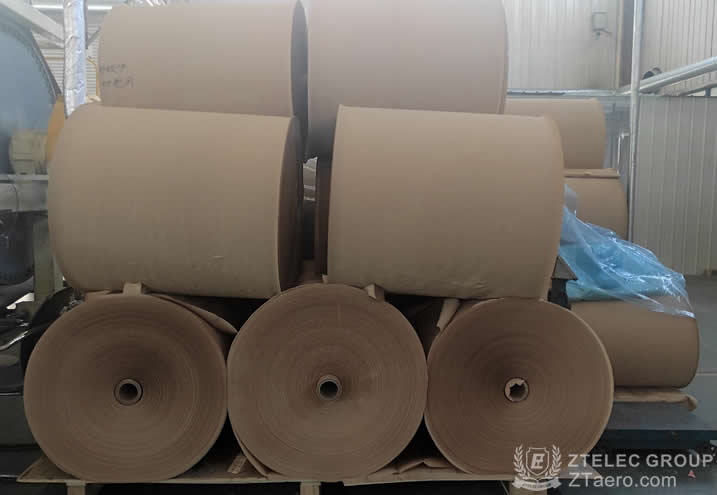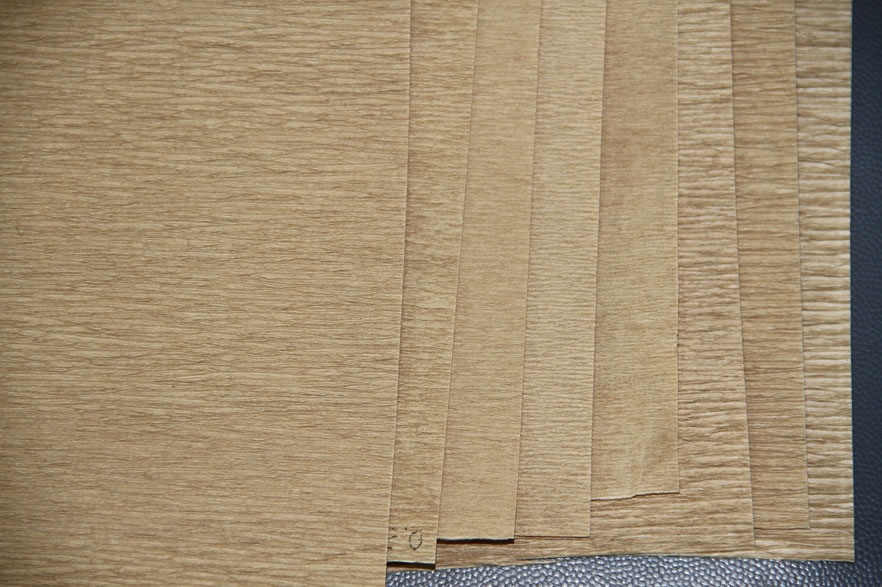Insulating crepe paper is a specialized insulating material named for its characteristic corrugated surface structure...
Insulating crepe paper is a specialized insulating material named for its characteristic corrugated surface structure. It is widely used in transformers for critical insulation protection, particularly in high-voltage and large-capacity transformers. Below is an overview of its core applications and features:
Corrugated Design: Features a textured surface with regular wrinkles formed through mechanical processing or specialized techniques.
Material Composition: Typically uses cellulose paper as the base material, enhanced via chemical treatments (e.g., high-temperature resin impregnation).
Adjustable Thickness: Thin single-layer thickness (0.05–0.2 mm), allowing multi-layer stacking to meet varying insulation requirements.

Electrical Insulation
Conductor Isolation: Wraps around conductors, leads, or windings to prevent short circuits between conductors or between conductors and grounded components.
Extended Creepage Path: The corrugated structure increases surface leakage distance, reducing risks of surface discharge, especially in high-voltage environments.
Mechanical Protection
Vibration and Deformation Resistance: Adapts to electromagnetic vibrations and thermal expansion/contraction during transformer operation, preventing insulation layer cracking.
Conformability to Complex Shapes: High flexibility enables tight wrapping around curved conductors or irregular structures.
Environmental Durability
High-Temperature Resistance: Withstands long-term operational temperatures (typically 105–120°C) and short-term overload conditions.
Moisture and Oil Resistance: Impregnation treatments protect against transformer oil penetration and environmental humidity.
Auxiliary Heat Dissipation
The corrugated structure may slightly increase heat dissipation surface area, though primary cooling relies on oil circulation or cooling systems.
Winding Insulation
Interlayer Insulation: Separates multilayer windings to prevent interlayer short circuits.
Edge Reinforcement: Multi-layer crepe paper wrapping strengthens insulation at winding edges where electric fields concentrate.
Leads and Connections
Lead Wrapping: Protects high- and low-voltage leads from contact with cores, clamps, or other metal parts.
Tap Switch Insulation: Insulates connection points in tap changers to ensure operational safety.
Insulation Barriers and Spacers
Oil Gap Filling: Acts as a solid insulating medium in oil-immersed transformers to block discharge in oil channels.
Structural Support: Combines with insulating blocks and spacers to form stable insulation support systems.
Specialized Protection
Bushing Leads: Insulates conductors inside bushings, accommodating curved paths.
Transition Zones: Provides flexible insulation at junctions between conductors, copper bars, or tap changers.
Cost-Effectiveness: Lower cost and easier processing compared to materials like epoxy resin.
Process Adaptability: Suitable for manual or mechanical winding, ideal for intricate insulation tasks.
Material Compatibility: Long-term stability with transformer oil, enameled wires, laminated wood, and other materials.
High Reliability: Lifespan aligns with transformers (decades) under strict quality control.
Insulating crepe paper, with its unique corrugated structure, high-temperature resistance, and flexibility, is a vital component of transformer insulation systems. It ensures safe operation under high voltage, vibration, and thermal stress through electrical isolation, mechanical protection, and environmental adaptability. Widely used in oil-immersed and some dry-type transformers, modern crepe paper is evolving to meet environmental demands, such as halogen-free flame retardancy and biodegradability, aligning with advancements in power equipment.
If you are interested in our products,, please send us a message and we will contact you as soon as we receive it. Email: info@ztaero.com whatsApp: +8616650273778